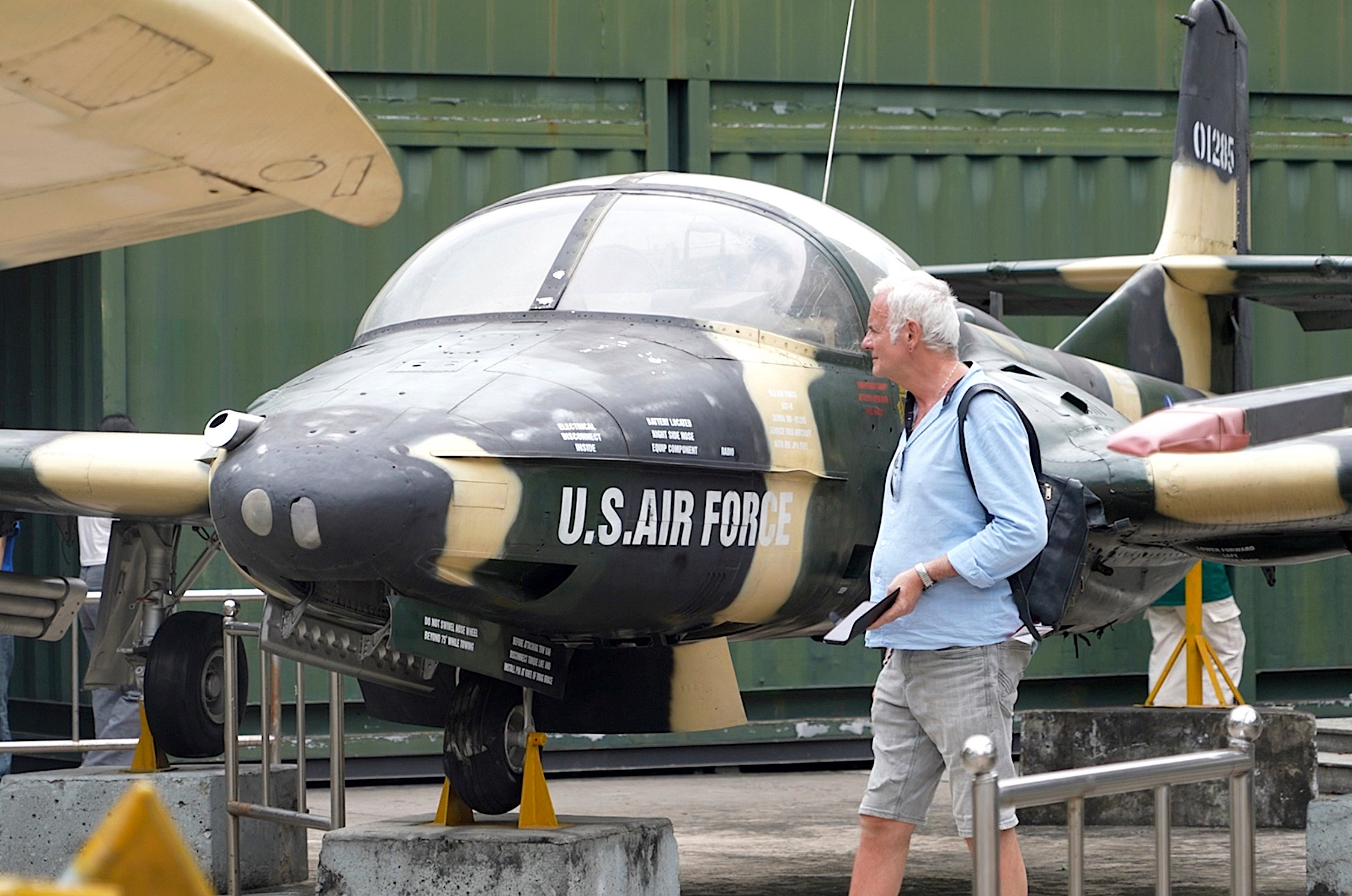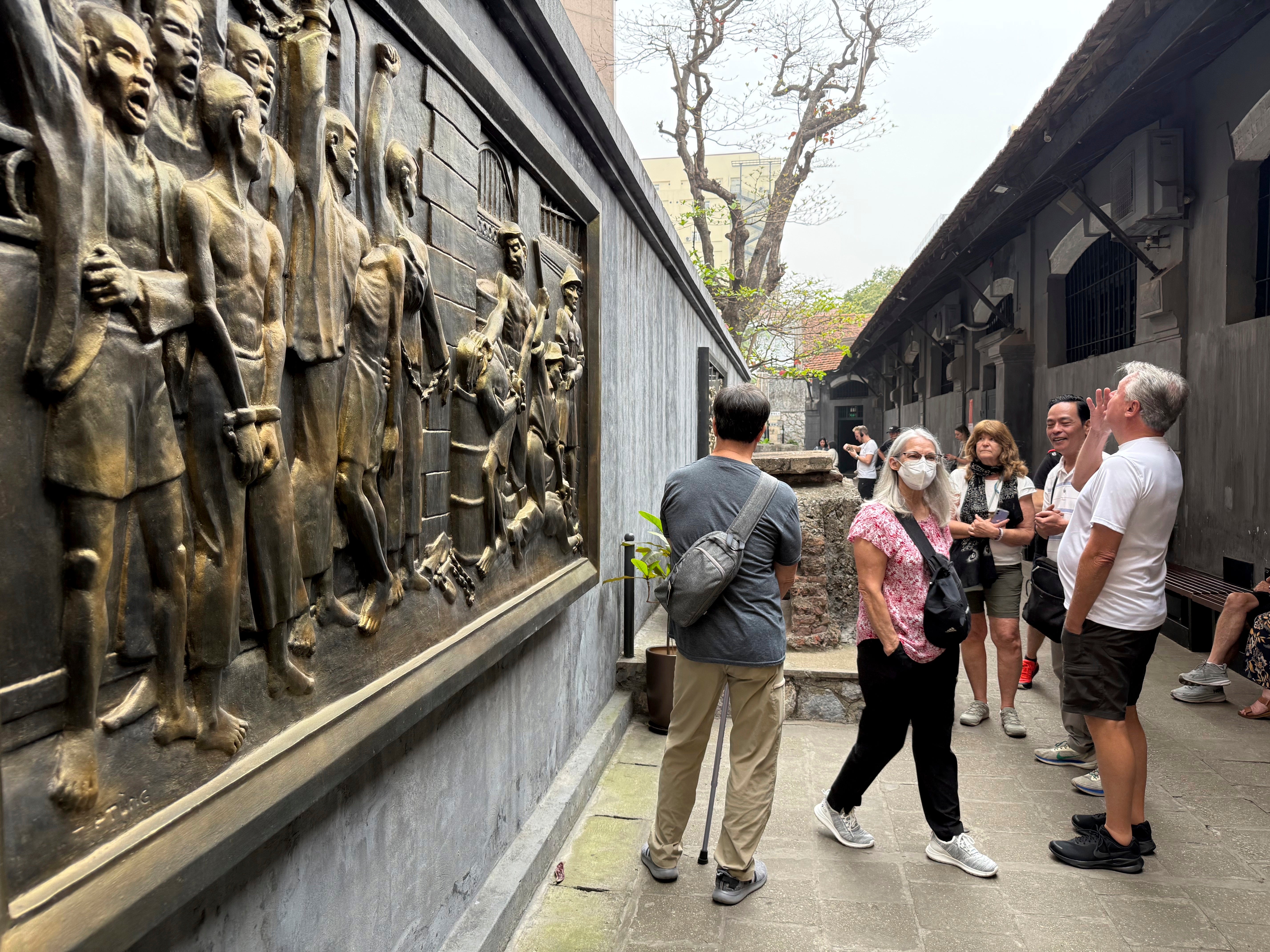More than 50 years after the Vietnam battle managed headings, some keep in mind the fights of Hamburger Hill, Hue, the Ia Drang Valley, and Khe Sanh from report, movement photos, and background publications.
For tons of of Americans and Vietnamese, these locations are the final stress-free areas of loved ones. Today, the fight zones of Vietnam act as expedition web sites for consultants from each side and guests in search of a first-hand understanding of the battle’s battlefields.
“It was a war zone when I was here before,” mirrored United States Army professional Paul Hazelton as he strolled along with his companion by way of the premises of the War Remnants Museum in Ho Chi Minh City, which was referred to as Saigon when he provided there.
Hazelton’s scenic tour merely reluctant of his eightieth birthday celebration took him again for the very first time to areas he labored as a younger draftee, consisting of Hue, the earlier Phu Bai Combat Base on the town’s borders, and Da Nang, which was a major base for each American and South Vietnamese pressures.
“Everywhere you went, you know, it was occupied territory with our military, now you just see the hustle and bustle and the industry, and it’s remarkable,” he mentioned.
“I’m just glad that we’re now trading and friendly with Vietnam. And I think both sides are benefiting from it.”

Vietnam’s conflict with the United States lasted for almost 20 years, from November 1955 to April 1975, and resulted within the deaths of greater than 58,000 Americans and lots of occasions that variety of Vietnamese.
For Vietnam, it began nearly instantly after the almost decade-long battle to expel the colonial French, who have been supported by Washington, which culminated with the decisive defeat of French forces at Dien Bien Phu in 1954.
The finish of French Indochina meant main modifications within the area, together with the partitioning of Vietnam into communist North Vietnam beneath Ho Chi Minh, and US-aligned South Vietnam.
This 12 months marks the fiftieth anniversary of the autumn of Saigon to North Vietnamese and Viet Cong guerrilla troops, and the thirtieth anniversary of the re-establishment of diplomatic relations between the US and Vietnam.
Tourism has rebounded quickly for the reason that Covid pandemic and is now a vital driver of Vietnam’s progress, the quickest within the area, accounting for roughly one in 9 jobs within the nation. Vietnam had greater than 17.5 million international guests in 2024, near the report 18 million set in 2019 earlier than the pandemic.
The War Remnants Museum attracts some 500,000 guests a 12 months, about two-thirds of whom are foreigners. Its reveals give attention to American conflict crimes and atrocities just like the My Lai bloodbath and the devastating results of Agent Orange, a defoliant extensively used through the conflict.

The US was to open the primary exhibit of its personal on the museum this 12 months, detailing Washington’s intensive efforts to remediate wartime injury, however it’s indefinitely on maintain after the Trump administration slashed international assist.
Other wartime websites in Saigon, which was the capital of South Vietnam, embody the South Vietnamese president’s Independence Palace the place North Vietnamese tanks famously crashed via the gates as they took the town and the Rex Hotel the place the US held press briefings derisively dubbed the Five O’Clock Follies for his or her paucity of credible data.
On the northern outskirts of the town are the Cu Chi tunnels, an underground warren utilized by Viet Cong guerrillas to keep away from detection from American planes and patrols, which attracts some 1.5 million folks yearly.
Today, guests can climb and crawl via among the slender passages and take turns at a firing vary capturing targets with war-era weapons just like the AK-47, M-16 and the M-60 machine gun often known as “the pig” by American troops for its cumbersome dimension and excessive charge of fireplace.
“I can understand a bit better now how the war took place, how the Vietnamese people managed to fight and protect themselves,” mentioned Italian vacationer Theo Buono after visiting the location whereas ready for others in his tour group to complete on the firing vary.
Former North Vietnamese Army artilleryman Luu Van Duc remembers the combating at first hand however his go to to the Cu Chi tunnels with a gaggle of different veterans offered a possibility to see how their allies with the Viet Cong lived and fought.
“I’m so moved visiting the old battlefields – it was my last dying wish to be able to relive those hard but glorious days together with my comrades,” the 78-year-old mentioned.
“Relics like this must be preserved so the next generations will know about their history, about the victories over much stronger enemies.”




